About a year ago, I passed a juniper in my garden that had filled in over the previous growing season. It was a good time to remove the old foliage, so I made a mental note to thin the tree.
A full year later, I still hadn’t thinned the foliage. And then I noticed that some of the branches had turned yellow.
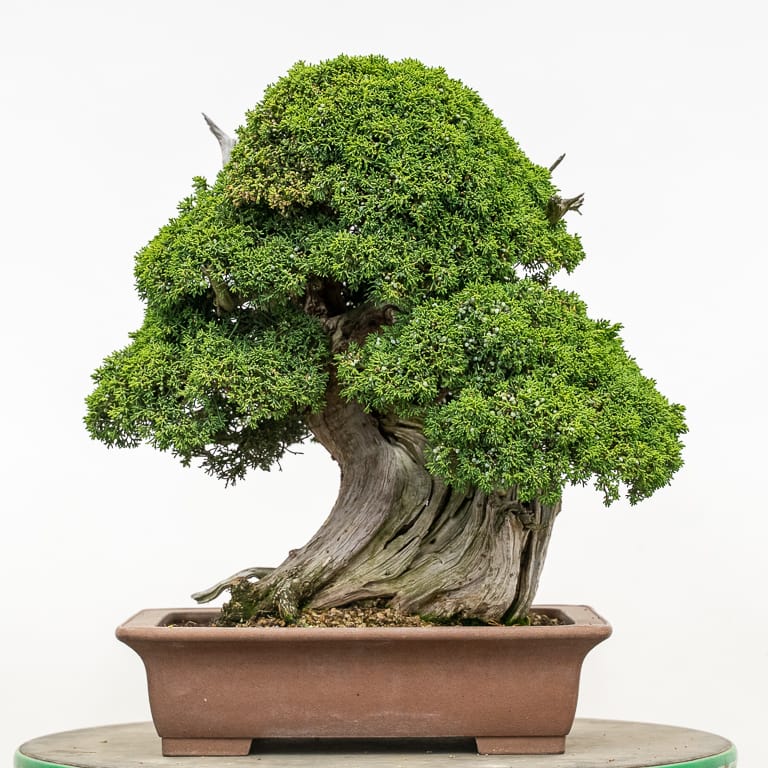
Shimpaku grafted on California juniper –
note the yellow patch on the upper left side of the tree
Similar yellowing showed up on a back branch too.
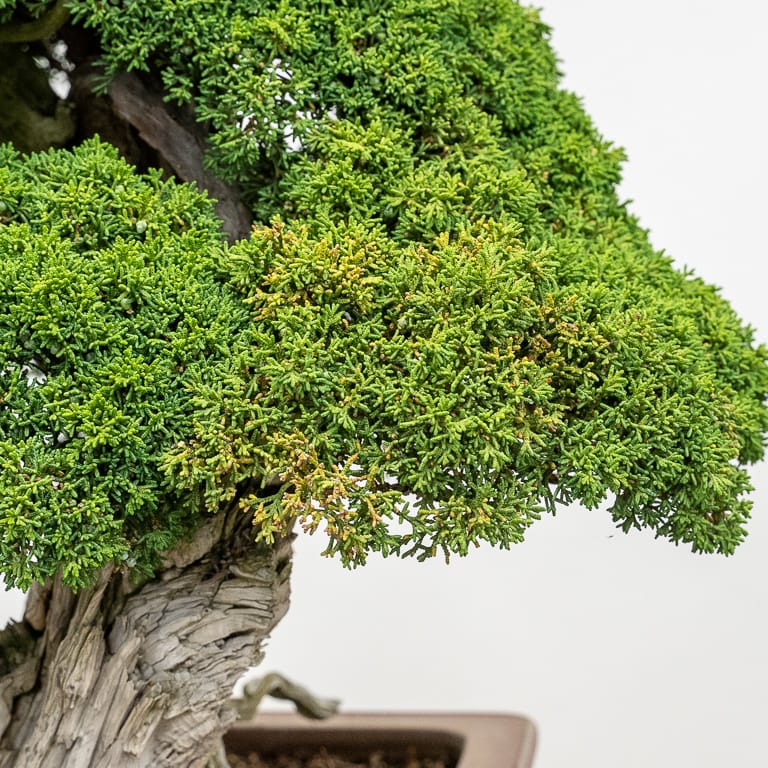
Yellow patches
I knew what the problem was, but took a closer look anyway.
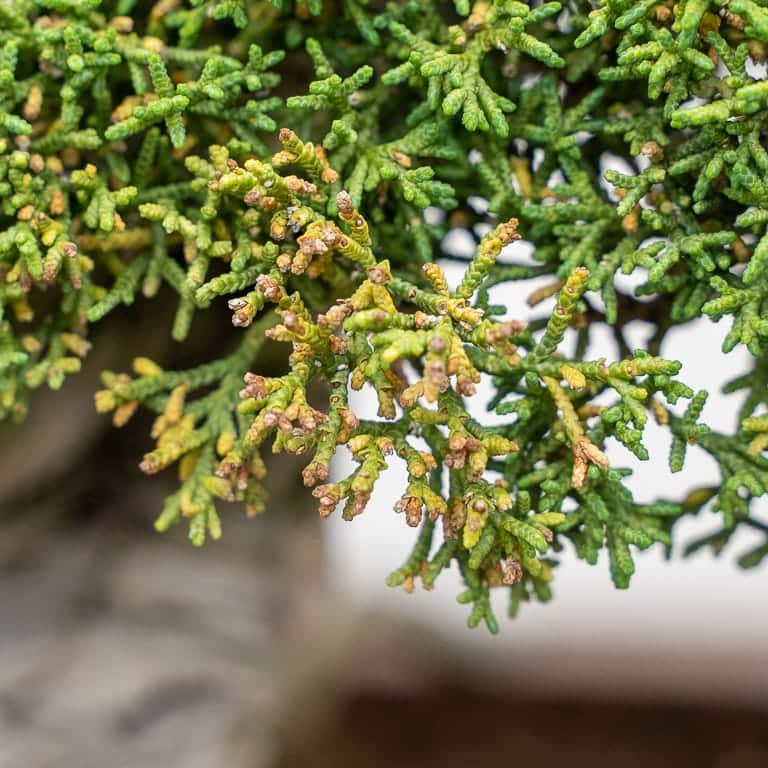
Weak branch
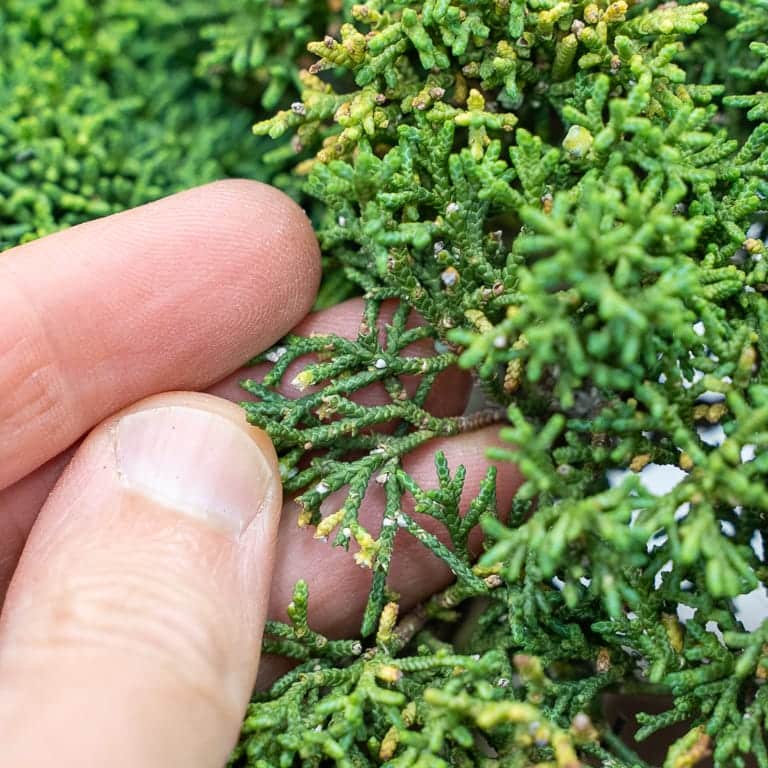
The culprit – juniper scale
Many species of juniper are susceptible to scale when the foliage is overcrowded. Simply thinning healthy trees when they are full can help them resist infestation and stay healthy year after year.
Fortunately the fix is easy. I thinned the tree. This usually makes a dent in the scale population, and I can follow-up with insecticidal soap if needed.
Here’s the tree after thinning.
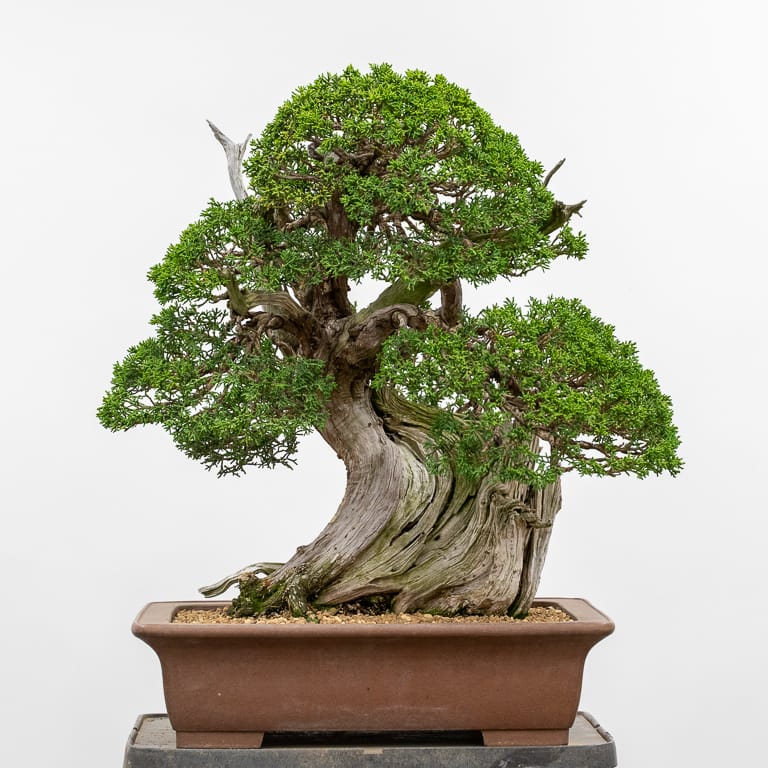
Shimpaku juniper – 18″ tall
I’ll let the tree recover over summer and look to work on it again after it puts on some new growth, either this winter or sometime next year.
Video Consultations Now Available
Have questions about your trees? Schedule an appointment to discuss strategies for improving your bonsai. Learn more about Bonsai Tonight’s Video Consulting.
English-language consultations are available worldwide.
Subscribe to Bonsai Tonight
New Posts Delivered Every Tuesday and Friday
Chris Neale says
Very nice tree! Glad it’s doing better.
I have a one-seed juniper project that is showing a little chloritic foliage. I’ve unfortunately, had some episodes of needle tip blight. I’ve trimmed it back to green foliage and treated it with fungicide. Now I wonder if I should also get after it for scale.
Chris
Jonas Dupuich says
Thanks Chris! Blights are a challenge for junipers. Fortunately, the right combination of treatments, keeping the foliage dry, and watching the watering carefully can help.
As for the scale, there’s no need to treat for it until you see them (usually they look like white dots).
Gia says
It is nice tree.
Is this a season to apply the lime sulfur on dead wood?
Gia
Jonas Dupuich says
Thanks Gia! Now is a good time to apply lime sulfur. You can apply it any time of year, and spring is a great time to work on deadwood. It is also good to let fresh deadwood dry out for several weeks before applying lime sulfur.
Sean Shepherd says
Jonas what do you use as an “insecticidal soap”?
Jonas Dupuich says
I typically use commercially available insecticidal soaps (they can be found in most garden centers) though I’d like try mixing my own. There are lots of resources online if you’re interested in the DIY approach, though I’d test any homemade treatments before applying them broadly.
Bartosz says
Hello. I have a similar problem. I have been fighting with juniper scale since a year and unfortunately without the expected result. What remedy do you use to successfully fight these insects?
Bartosz says
Unfortunately, in my case insecticidal soaps did’t help. What else can I use?
Jonas Dupuich says
I try to start with gentle pesticides like soaps and oils, then move on to chemical pesticides that list the pest, scale in this case, on the label. Because scale can be challenging to clear up, a systemic pesticide is another option.
If you try neem or horticultural oil, do note that the oil can temporarily change the color of the foliage and that some people report that it can burn the foliage, especially in warm weather.
Here’s a good starting point for further research: http://ipm.ucanr.edu/PMG/PESTNOTES/pn7408.html
Terri Wall says
Beautiful tree! What time of year did you do the trimming?
Jonas Dupuich says
Thanks, Terri! I did the trimming last week to help combat the scale. Normally I’d prefer to do this work at any other time of year – summer, fall, and winter are good times for thinning junipers.
Zack Clayton says
Jonas, when thinning for insects do you remove the damaged branchlets, or thin them as for the rest of the tree and let them recover after a treatment?
Also – It’s off label, but a tablespoon of Pinesol in a gallon of water is used by our local conservatory to “wash the leaves” of their collection. The real reason is that the turpenes in the Pinesol have an insecticidal action without using human toxic chemicals in the display greenhouses. It is dilute enough that there is only a slight odor that is usually unnoticeable. They use a hand sprayer. I will guess that the chemical action of the turpenes and the de-greasing power of the Pinesol combine and the insects dehydrate.
Jonas Dupuich says
Great question about damaged branches. If the branch is small and can be replaced by a healthy branch nearby, I’d remove it. If it’s larger or is necessary for the design, I’d keep it.
When thinning this tree, I only removed a few branches about 1-2″ in length because they were weak.
And thanks for the Pinesol tip. DIY insecticidal soaps are a good way to go and I didn’t know about the extra benefit that Pinesol specifically offers. Ironic that we might be using a pine product to help keep our pines healthy!